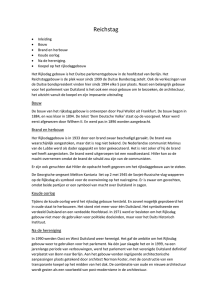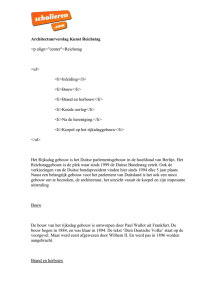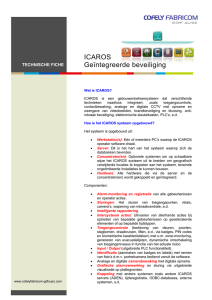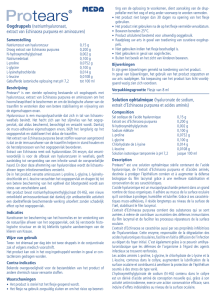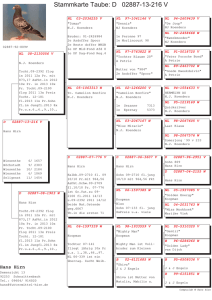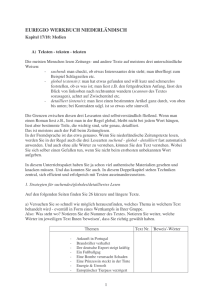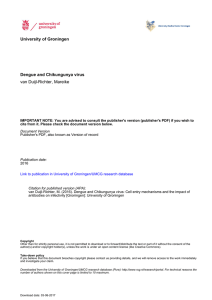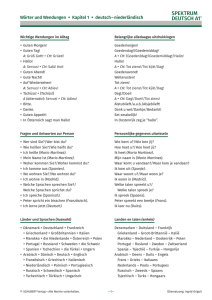Note on linear operators
Werbung
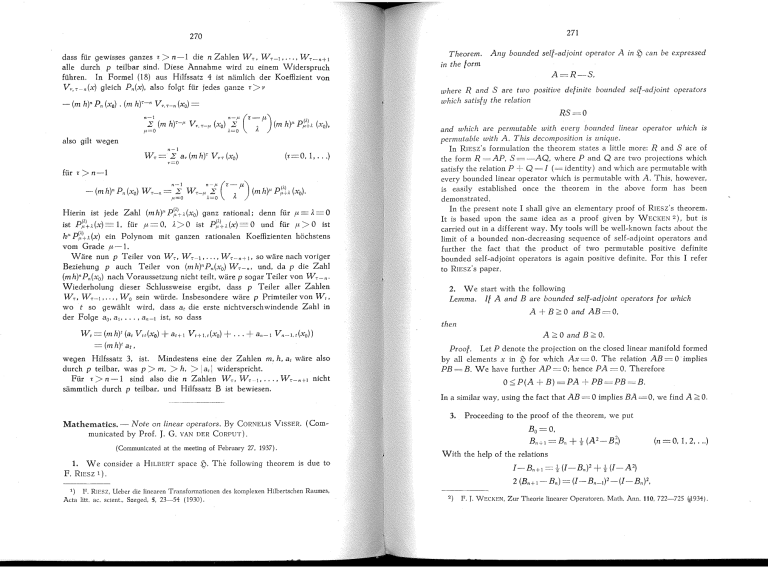
271 270 dass für gewisses ganzes r>n-l die nZahlen W T. W T- I . . . . . W T- n+ 1 alle dureh p teilbar sind. Diese Annahme wird zu einem Widersprueh führen. In Formel (18) aus Hilfssatz 4 ist nämlieh der Koeffizient von VV.T-n(X) gleieh Pn(X). also folgt für jedes ganze t>1' Theorem. in the [arm Any bounded sel[~adjoint operator A in Sj can be expressed A=R-S, where Rand S are two positiue de[inite bounded which satis[y the relation sel[~adjoint operators RS=O also gilt wegen n-I W T= 2: av (m h)T V YT (xo) (t=o, 1, ... ) ,'=0 für r> n-l n-I n-f' -- (m h)n Pn (xo) W T- n =f'~: WT-f' À~: (r- ft) (m Je h)f' p~À~À (xo)· Hierin ist jede Zahl (m h)f' p~)+ À (xo) ganz rational; denn für = ft = Je = 0 >° ist P~~ À (x) 1. für ft 0, Je> 0 ist P;~~ À (x) --- 0 und für ft ist hf' P;~~À(x) ein Polynom mit ganzen rationalen Koeffizienten höehstens vom Grade 1. Wäre nun p Teiler von W T• W T- 1 , • ••• W T- n+ 1. so wäre naeh voriger Beziehung p aueh Teiler von (mh)nPn(xo) W T- n, und. da p die Zahl (mh)np,,(xo) na eh Voraussetzung nicht teilt. wäre p sogar Teiler von W T- n • Wiederholung dieser Sehlussweise ergibt, dass p Teiler aller Zahlen W T• W T- I , •••• Wo sein würde. Insbesondere wäre p Primteiler von W t , wo t so gewählt wird. dass at die ers te nichtverseh windende Zahl in der Folge ao• al •... ,an-I ist, so dass ft - Wt = (m h)t (at Vti(xo) + at-I-I V t+ u (xo) + ... + a,,_1 V n- and which are permutable with euery bounded linear operator which is permlltable with A. This decomposition is unique. In RIEsz's formulation the theorem states a little more: Rand S are of the form R = AP. S = -AQ. where Pand Q are two projections which satisfy the relation P +- Q = I (= identity) and which are permutable with every bounded linear operator which is permutable with A. This. however. is easily established onee the theorem in the above form has been demonstrated. In the present note I shall give an elementary proof of RIEsz's theorem. It is based upon the same idea as a proof given by WECKEN 2). but is carried out in a different way. My tools wil! be well~known facts about the limit of a bounded non~decreasing sequence of self~adjoint operators and further the fact th at the product of two permutable positive definite bounded self~adjoint operators is again positive definite. For this I refer to RIESZ'S paper. 2. We start with the following Lemma. It A and Bare bounded wegen Hilfssatz 3, ist. Mindestens eine der Zahlen m. h, at wäre also dureh p teil bar, was p> m. > h, > I at 1 widerspricht. Für n -1 sind also die n Zahlen W'!", W T1 •.. . , W T - n +1 nicht sämmtlich dureh p teil bar, und Hilfssatz Bist bewiesen. t> then A;:;;;; 0 and B;:;;;; o ;S;P(A +- B) =PA +- PB=PB=B. In a similar way, using the fa ct that AB = 3. °implies BA = 0, we find A;:;;;; O. Proceeding to the proof of the theorem, we put Bo=O. Bn+1 = Bn +t (n (A2_B;') = 0, 1. 2, ...) With the help of the relations 1. We eonsider a HILBl~RT spaee .'i). The following theorem is due ta F.RIESZ1). 1) F. RIESZ. Ueber die linearen Transformationen des komplexen Hilbertschen Raumes. Acta litt. ac. scient., Szeged, 5, 23-54 (1930). o. Praat. Let P denote the projection on the closed linear manifold formed by all elements x in .f;> for which Ax '= O. The relation AB = 0 implies PB=B. We have further AP=O; hence PA=O. Therefore Mathematics. - Note on linear operators. By CORNELIS VISSER. (Com~ municated by Prof. J. G. VAN DER CORPUT). (Communicated at the meeting of February 27. 1937). operators [or which A +-B;:;;;;O and AB=O, Lt(xo)) =(mh)tat, sel[~adjoint I-B n+ 1 = t (l-Bn)2 + t (I-A2) 2 (Bn + 1 - Bn) = (I - B n-- I )2 - (I - Bn)2, 2) F. r. WECKEN, Zur Theorie Iinearer Operatoren, Math. Ann. 110, 722-725 (~~934). 272 mathematical induction shows th at o-=: Bn -=: Bn+ 1 -== J. Consequently the sequence Bn has a limit B, which is a positive definite bounded self~adjoint operator. Since every Bn is permutabk with any bounded linear operator which is permutable with A, B has the same property. Obviously B satisfies the relation B=B +t (A2_B2); hence Plantkunde. - De periodiciteit der bloem vorming bij Calluna vulgaris (L.) Hul!. Door W. BEIJERINCK. (Mededeeling N0. 14 van het Biologisch Station te Wijster). (Aangeboden door Prof. A. H. BLAAUW). (Communicated at the meeting of February 27. 1937). We now put R=t(B+A), S=t (B--A). Then R + S = B ;;; 0 and RS = O. Hence, by virtue of the lemma, R;;; 0 and S;;; o. Further A == R - S and finally we observe that Rand S have the required permutability property, because B has. Thus the existence of Rand S has been proved. We next show their unicity. Suppose th at we had a second decomposition A = Rl -Sl with the same properties. Then (R-R 1 ) - (S-S!l=O. Squaring yields + (S-Sd 2 + 2RS 1 + 2R 1 S---2RS-2R 1S 1 =0. RS = RjS 1 = 0, RlS;;; 0, RS 1 ;;; 0, all members on the left must (R-R 1 )2 Since vanish. In particular (R-Rd 2 = (S-Sl)2=0; hence R=Rl and S=Sl_ 4. Finally we show how the form in which RIESZ expresses the theorem may be obtained. Let P denote the projection on the c10sed linear manifold formed by all x for which Sx = O. P is permutable with every bounded linear operator which is permutable with A. For, if L is such an operator, o= LAP = ALP, whence PLP = LP. Likewise PL*P = L*P, where L* is the adjoint of L. On taking adjoints, we obtain PLP = PL. Hence LP = PL. The relation SR = 0 imp lies PR==RP=R. Hence AP= (R-S)P = RP-SP=RP=R and, if we put Q=J-P, -AQ = -A + R = S. Thus ~IESZ'S theorem has been proved to its full extent. Calluna overwintert met open bladknoppen. De jongste blaadjes zijn naar elkaar toe gebogen over het terminaal gelegen hoofd~vegetatiepunt en beschermen dit, mede door de aan de bladtoppen zich bevindende trichomen, tegen vocht en andere storende invloeden van buitenaf. Behalve dit terminaal gelegen groeipunt bevinden zich dikwijls nog laterale groeipunten aan het dichtbebladerde kortlot, n.l. in de oksels der dakpansgewijs over elkaar gelegen, decussaat geplaatste, kort naaldvormige blaadjes (Fig. 2 en 3). In het vroege voorjaar, soms reeds in Februari, zoodra het weer en de overige omstandigheden het toelaten, heeft op onze breedte een strekking plaats van de knop~internodiën en jonge blaadjes, terwijl deelingen in het meristeem der groeipunten plaats vinden, waardoor nieuwe blad~primordia worden afgesnoerd. Deze eerste strekkingsperiode heeft echter met "horten en stoot en" plaats, al naar gelang de weersomstandigheden dit medebrengen. Uit de laterale vegetatiepunten kunnen, evenals uit de terminale, lang~ loten of kortloten voortkomen, die op hun beurt in het zelfde groeiseizoen zich kunnen vertakken, zijscheuten vormend van de eerste, tweede en bij hooge uitzondering zelfs van de derde orde. Ook komen overgangen voor tusschen lang~ en kortloten of kan periodiek een langlot als kortlot verder groeien, - zooals dit geregeld gebeurt in den herfst, - of omgekeerd, een kortlot groeit als langlot verder, zooals dit in het voorjaar geregeld voor~ komt. Tegen den winter wordt zoowel de internodiën~lengte als de bladlengte gereduceerd, zoo dat de dicht opeengepakte en apicaal kleine~ wordende, overblijvende loofbladen in het volgend groeiseizoen de plaats aanduiden, waar de winter knop heeft gelegen. De kortlotbladen kunnen 2-2t jaar groen blijven, in tegenstelling met de doorgaans binnen het groeiseizoen afstervende langlotbladen, in wier oksel de zijscheuten ontspringen. Bij uitzondering kunnen aan krachtig ontwikkelde planten de langlotbladen levend overwinteren om dan in het volgende voorjaar af te sterven. Calluna vormt dus rijk vertakte jaarscheuten. Beziet men nu gedurende den bloeitijd in Augustus of September een krachtig ontwikkelden jaar~ scheut, welke meestal 15-20 cm, bij uitzondering 50-55 cm lengte bereikt, dan kunnen daaraan drie zones worden onderscheiden, n.l.:

